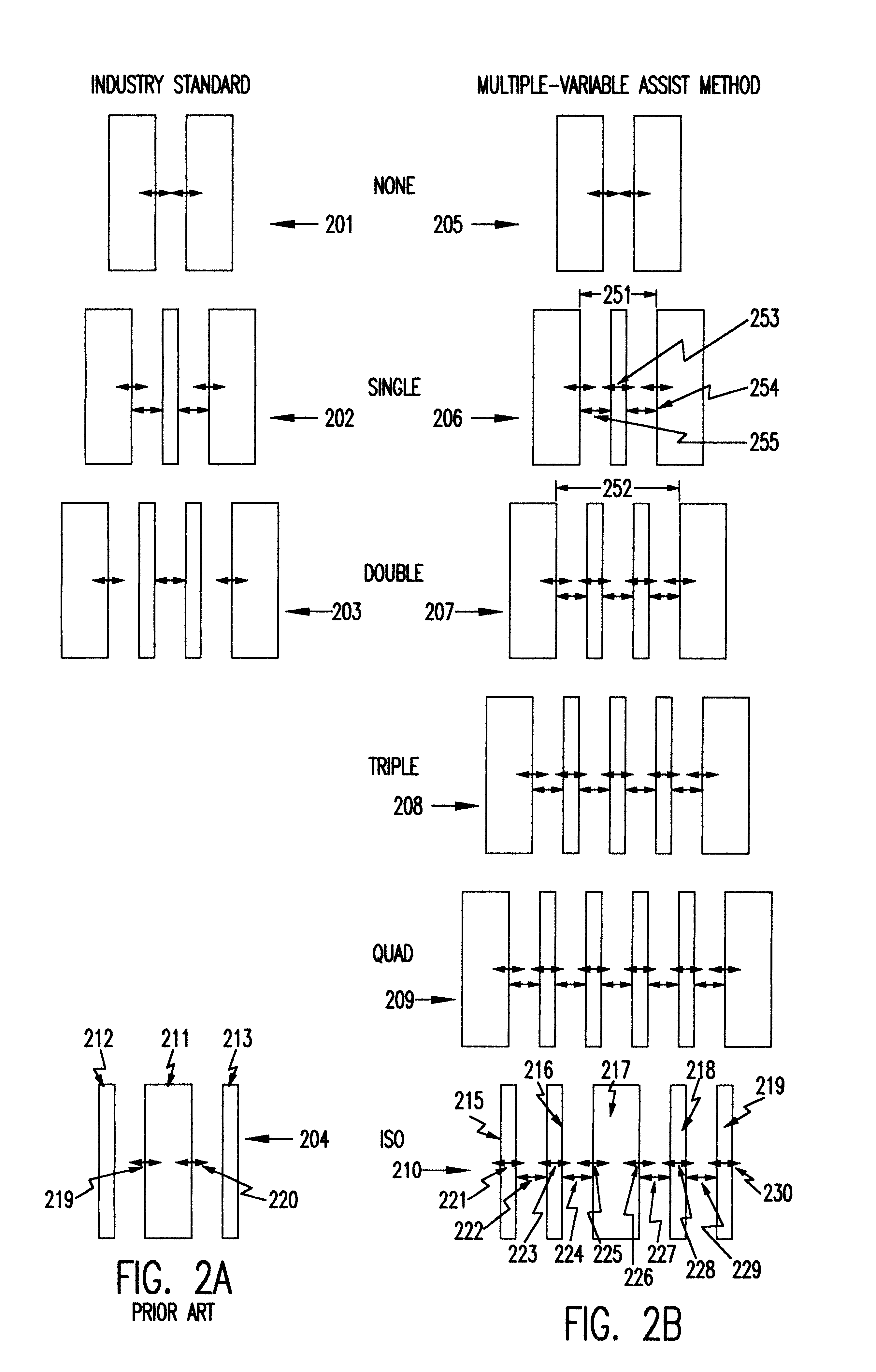Method to determine optical proximity correction and assist feature rules which account for variations in mask dimensions
a technology of optical proximity correction and assist feature rules, which is applied in the field of correction of linewidth deviations in optical lithography, can solve the problems of inability to accurately represent the merit of a method, the cost of techniques, and the need for optical proximity correction
- Summary
- Abstract
- Description
- Claims
- Application Information
AI Technical Summary
Benefits of technology
Problems solved by technology
Method used
Image
Examples
Embodiment Construction
Referring now to the drawings, and more particularly to FIGS. 1A and 1B, there are shown mask patterns used in industry standard practice. FIG. 1A shows a line 11 with two fixed assist features 12 and 13 on either side of the line 11. FIG. 1B shows a line 14 with a pair of fixed assist features 15, 16 and 17, 18 on either side of the line 14. Industry standard practice is to use fixed assist feature sizes and placements with a maximum of two assists placed between two lines, or one per edge for an isolated line. The need for variable sizes and placements, along with multiple assist features (i.e., greater than two) is recognized, but generation of correction rules is difficult. For example, for pitches requiring 4 assists, there are at least 4 dimensions that can be varied. The result of this is that checking three values for each variable results in 3.sup.4 (3 to the fourth power) or 81 possible combinations.
Furthermore, the correction rule behavior tends to vary rapidly close to t...
PUM
 Login to View More
Login to View More Abstract
Description
Claims
Application Information
 Login to View More
Login to View More - R&D
- Intellectual Property
- Life Sciences
- Materials
- Tech Scout
- Unparalleled Data Quality
- Higher Quality Content
- 60% Fewer Hallucinations
Browse by: Latest US Patents, China's latest patents, Technical Efficacy Thesaurus, Application Domain, Technology Topic, Popular Technical Reports.
© 2025 PatSnap. All rights reserved.Legal|Privacy policy|Modern Slavery Act Transparency Statement|Sitemap|About US| Contact US: help@patsnap.com



